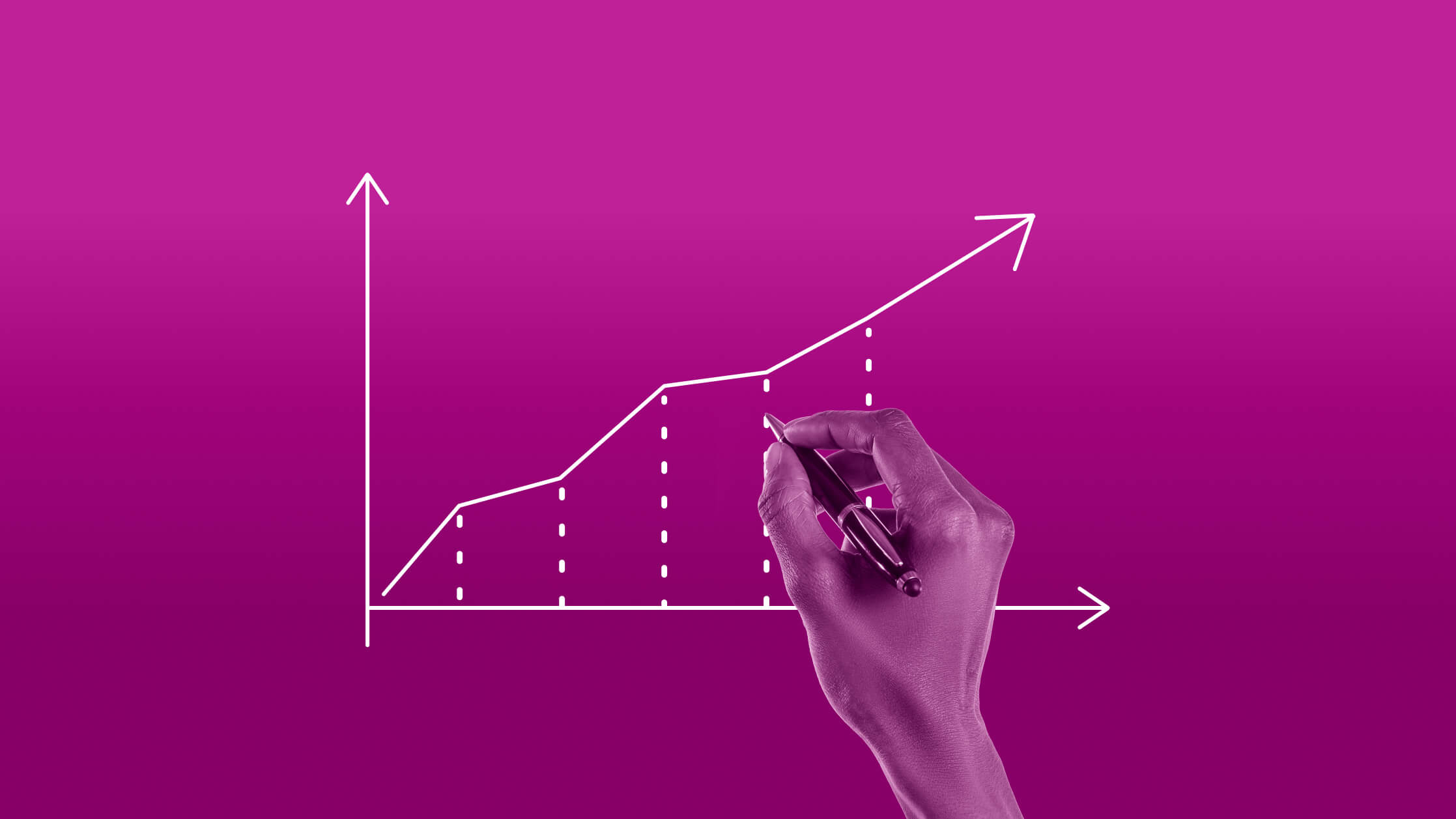What you’ll get from this article:
- A clear understanding of RPV
- How to accurately calculate RPV
- How RPV differs from other metrics
- 6 proven tips to increase RPV
In 2023, ecommerce was 19% of retail sales worldwide. It goes without saying that ecommerce has been on the rise for years — and by 2027, it's expected to reach nearly 25% of global retail sales. With more and more consumers heading online to satisfy their shopping needs, ecommerce businesses continue to reap the benefits of the increased demand.
The benefits of online retail are virtually endless. Merchants can meet consumers where they are, leverage data and insights to provide custom shopping experiences, and take advantage of higher profit margins by eliminating the overhead of brick-and-mortar retail. Online retail also hedges against some of the market changes occurring, such as a reduction in the workforce, unstable gas prices, and health risks of the pandemic.

But even with the benefits and lower costs associated with online retail, it’s not all sunshine and rainbows. Customer acquisition costs are rising, competition is increasing, and unfortunately, it’s not uncommon for online stores to go up in digital flames. While there are lots of ways to win in today’s market, merchants that want to build a healthy and long-lasting business need to have a deep understanding of customer behavior.
-
How many visitors are we getting?
-
What products are they viewing?
-
Are they purchasing?
-
Are they interacting with our product recommendations?
-
How much are they spending?
Each of these questions is associated with common efficiency metrics that allow merchants to drill down into the nuts and bolts of their profit margins and overall business health.
Here’s how one of the most powerful tools, revenue per visitor (RPV), can help you gain deeper insights to grow your online business.
What is Revenue Per Visitor?
RPV (revenue per visitor) is a measurement of the money generated every time a customer visits your online store.
RPV = Total Revenue (AOV x Conversions) / # of Unique Visitors (Checkouts)
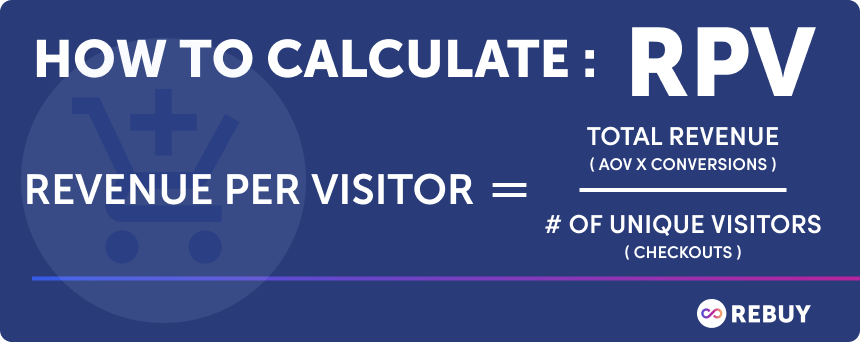
🛑 STOP!
Getting an accurate view of RPV requires a clear understanding of the term, “unique visitor.” In this instance, it refers to a person who has visited your website at least once and is counted only once in a given reporting period. If that same visitor goes to your website to look at a product and then comes back again to place it in their shopping cart, and then returns a third time to purchase the item, they’re only counted as one visitor. That way, you can evaluate actual store performance without inflated numbers resulting from redundancies.
Why is RPV important?
RPV, as a critical key performance indicator, gives you a unique look into the performance of your business. It not only provides deeper context around average order value (AOV) and conversion rates but it offers a holistic view of your end-to-end performance by connecting your top-of-funnel efforts to your onsite effectiveness and, ultimately, revenue.
The message here is: Don't sleep on RPV!
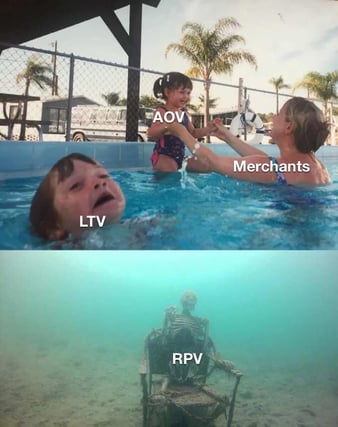
AOV (Average Order Value) = Revenue / Orders
RPV and AOV are often mistaken for each other, but they track different metrics. Revenue Per Visitor (RPV) measures the average revenue generated per click or visit, while average order value measures the average amount of revenue spent on each unique conversion.
For example, let’s say your online store generates total revenue of $2,000 in January and there were 200 total orders during that month. Using the formula, you can calculate the AOV of $10 ($2,000/200=$10).
While AOV is an important KPI for all ecommerce shops to measure, it doesn’t tell you how effectively your store converts shoppers into buyers.
CVR = Conversions / Visits
Conversion Rate (CVR), on the other hand, will tell you exactly how likely a site visitor is to buy something from your store. In short, it measures the percentage of visitors that complete a purchase.
For example, if 2 out of every 100 visitors to your site last month completed a purchase, your CVR for that month would be 2%. This is vital information when looking at how good your store is at persuading shoppers to buy from you.
CVR's limitation is that it doesn't distinguish high-dollar purchases from low-dollar ones. To CVR, all sales are the same. CVR is an essential metric to track but again, it doesn't tell the whole story.
The Big Picture: RPV in Ecommerce Metrics
Used together, RPV, AOV, and CVR can provide a more complete picture of your store performance and will lead you to insights about your business that you’ve never had before.
For example, an apparel shop ran an Instagram ad campaign in July. They earned $100,000 in revenue in July and had 5,000 visitors. $100,000 divided by 5,000 equals an RPV of $20 for July.
Now, let’s say the Instagram ads cost $3 per lead with an average conversion rate of 40%. If they spend $1,000 on Instagram ads and have an RPV of $20, you can expect the ad campaign to generate $2,666. This is valuable information you can’t get without knowing your RPV. Additionally, considering the customer acquisition cost alongside RPV helps in understanding the overall health of the business in terms of revenue generation.

Let’s look at another example. Let’s say you have a fashion brand and in July you had a CVR of 2%, an AOV of $55, and an RPV of $1.38.
In August, you decide to promote a new necklace for $150. Since it’s more expensive than your other products, fewer customers make the purchase. The significant drop in CVR makes you freak out a little, but you relax instantly when you realize you sold enough necklaces to increase RPV by 20%, thus boosting total revenue. (Heyo!) The increase to RPV gives context to the decline in conversions and thus gives a more holistic picture of what’s happening.
| KPI |
July |
August |
Trend |
| CVR |
2.5% |
1.5% |
(-) 40% |
| AOV |
$55 |
$115 |
+109% |
| RPV |
$1.38 |
$1.73 |
+20% |
| Total Rev |
$138,000 |
$173,000 |
+20% |
RPV is important because it enables businesses to see the average value of each visitor. You can use it to evaluate new visitor acquisition efforts, see which marketing strategies are effective, and determine how much you can afford to spend on paid advertising.
RPV and Segmentation
What’s more, RPV can tell you the value of specific customer segments. By comparing the RPV of your email subscribers to the RPV of your social media referrals will tell you which segment is likely to spend more on your site. You can then use this information to influence how you spend your marketing budget. Additionally, analyzing RPV alongside customer lifetime value provides a more comprehensive view of business performance.
6 Proven Tips to Drive RPV
There are several ways of increasing your RPV:
-
Marketing and sales strategies play a crucial role in improving revenue per visitor (RPV). By tailoring these strategies to different customer segments, you can optimize revenue generation.
-
Increase the number of customers actually purchasing your products (ie. improve your conversion rate)
-
Increase the purchase of each customer (ie. increase your average order value)
-
Improve the quality of your paid traffic (increase traffic to your site through targeted marketing)
The proof is in the revenue. If you’re successful at any of these, your RPV will show a direct positive correlation. Improve all of them and your RPV will take off.
Let’s get to it!
1. Build Value Through Upsells and Cross-sells
Cross-sells boost your bottom line by encouraging customers to spend more money on related products. Conversely, upsells increase revenue by encouraging customers to consider a premium product. Don’t miss out on offering your customer an upgrade! (Learn more about upselling and cross-selling.)
2. Upgrade Your Shopping Cart
In 2024, the average cart abandonment rate is 70.19% across all industries and even higher on mobile devices, coming in at a whopping 85% abandonment rate. The good news is that with some simple improvements, such as offering free shipping, providing multi-currency support, and creating urgency around a point of sale with a countdown timer, you can drastically improve how your shopping cart performs. (Have a look at these optimized shopping carts for inspiration.)
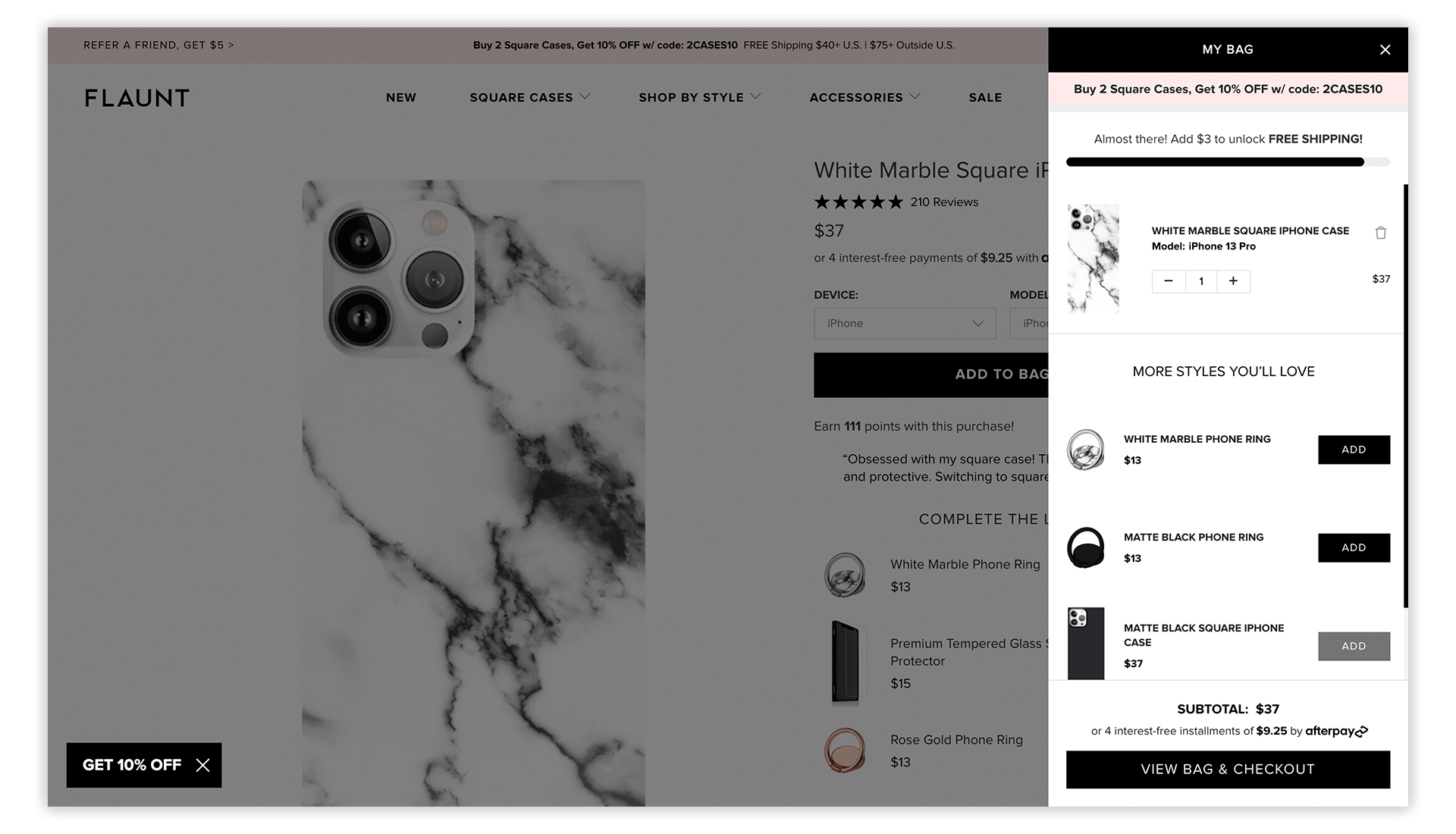
3. Improve the Quality of Your Paid Traffic
Just having traffic on your website isn’t enough anymore. If you’re paying for traffic, it’s critical to have metrics to go along with it—who your customers are, how long they’re on your site, and if/what they are actually purchasing. By understanding these metrics, you can gain valuable insights to make strategic decisions on how to target certain buyer personas, keywords to focus on, and where you may be losing customers.
4. Display Social Proof Throughout the Buyer's Journey
Despite thousands of years of evolution, humans are still social animals. The evidence lies in the stats: 88% of consumers trust user reviews when buying a product. With endless access to research, and tighter budgets, customers want to know what people are buying, how they're using it, and what they think about it. Social proof, or the validation of a site's content, messaging, and branding by users, is one of the most reliable ways to immediately impact conversions and sales.
5. Pursue Personalized Product Recommendations
In this new era of ecommerce, your customer expects you to understand them and translate their data into personalized product recommendations. Customers don't want brands to waste their time. (The average customer only spends 54 seconds on a site.) In other words, every ecommerce experience should pack a punch— delivering unique, data-driven shopping experiences that use insights to drive personalized recommendations
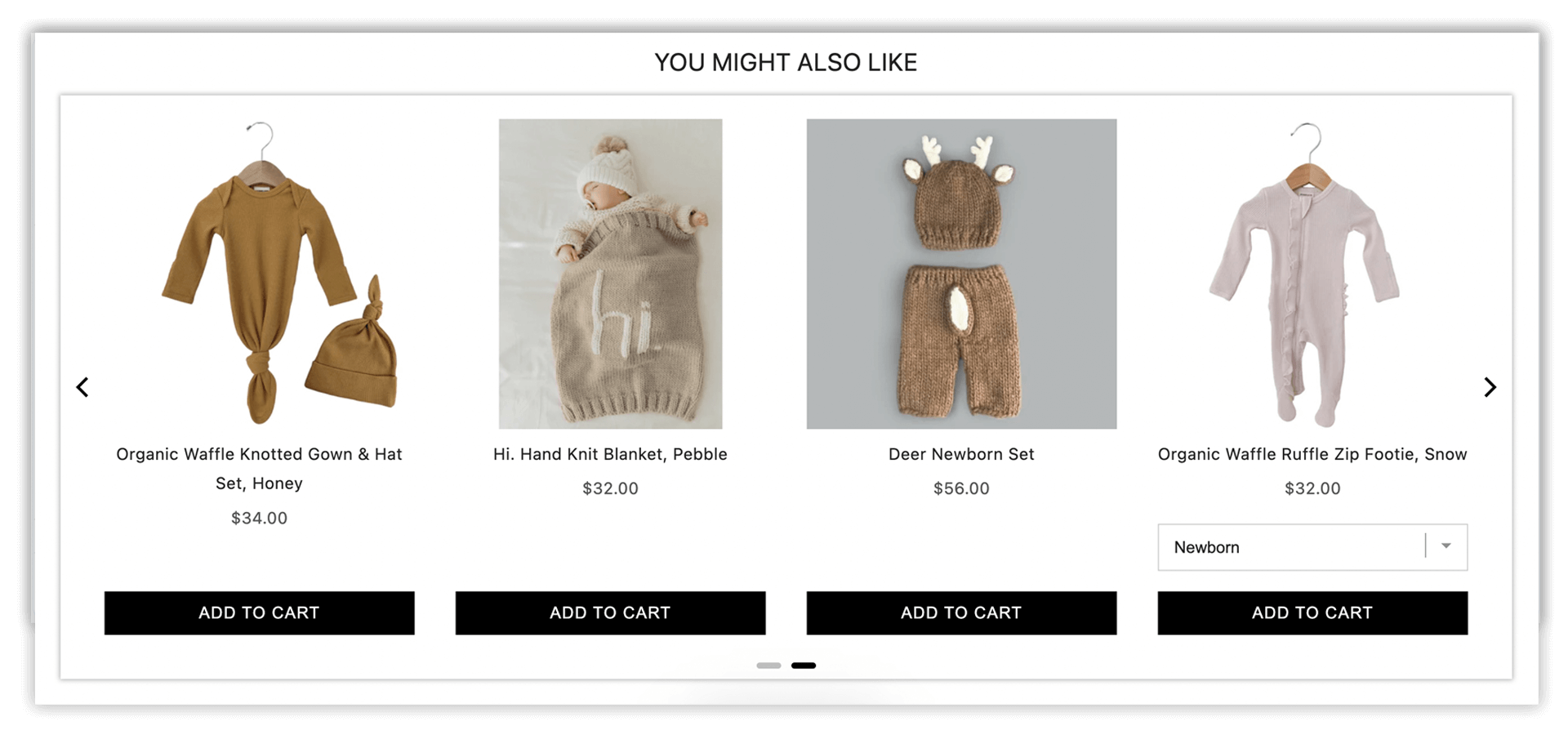
6. Take Advantage of Post-purchase Opportunities
One thing that hasn't changed in ecommerce versus the traditional retail experience is that it's still easier and cheaper to retain a customer than to garner a new one. A great way to keep customers coming back is with AI-driven post-purchase recommendations that increase AOV and build customer loyalty.
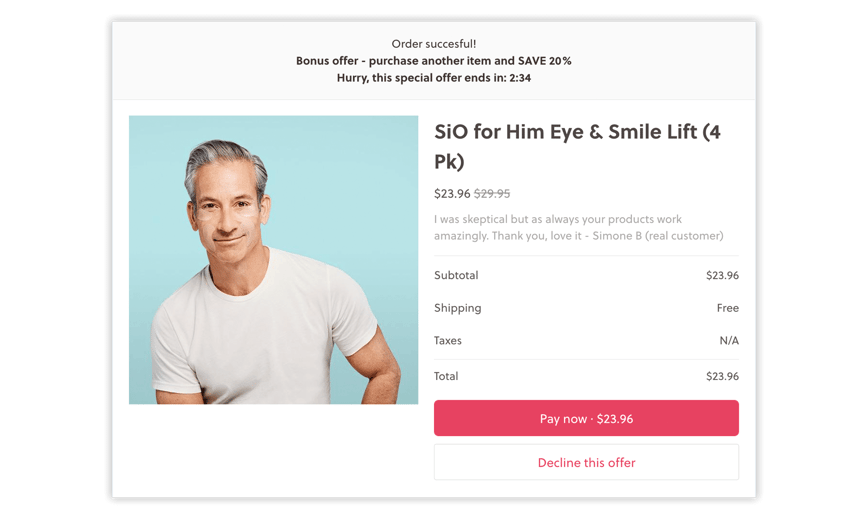
Start Thinking About RPV
RPV is one of the most compelling indicators of ecommerce health. Measuring RPV alongside other ecommerce metrics such as Revenue Per Visitor (RPV), Average Order Value (AOV), Conversion Rate, Total order, Items per order, and Return on Investment (ROI) is crucial for a comprehensive performance assessment.
If you’re looking to boost your RPV, the first step is to start tracking it. The old business adage, “what’s measured can be managed,” certainly rings true when it comes to ecommerce KPIs. Once you start noticing trends, RPV can become a powerful tool to navigate the rough and quickly-changing waters of ecommerce.
•••
Try Rebuy free and see why the world’s top brands use Rebuy to accelerate sales growth.
Take advantage of our 21-day free trial and install Rebuy today.
To keep up with the latest trends, platform updates, and more, follow us on LinkedIn.
